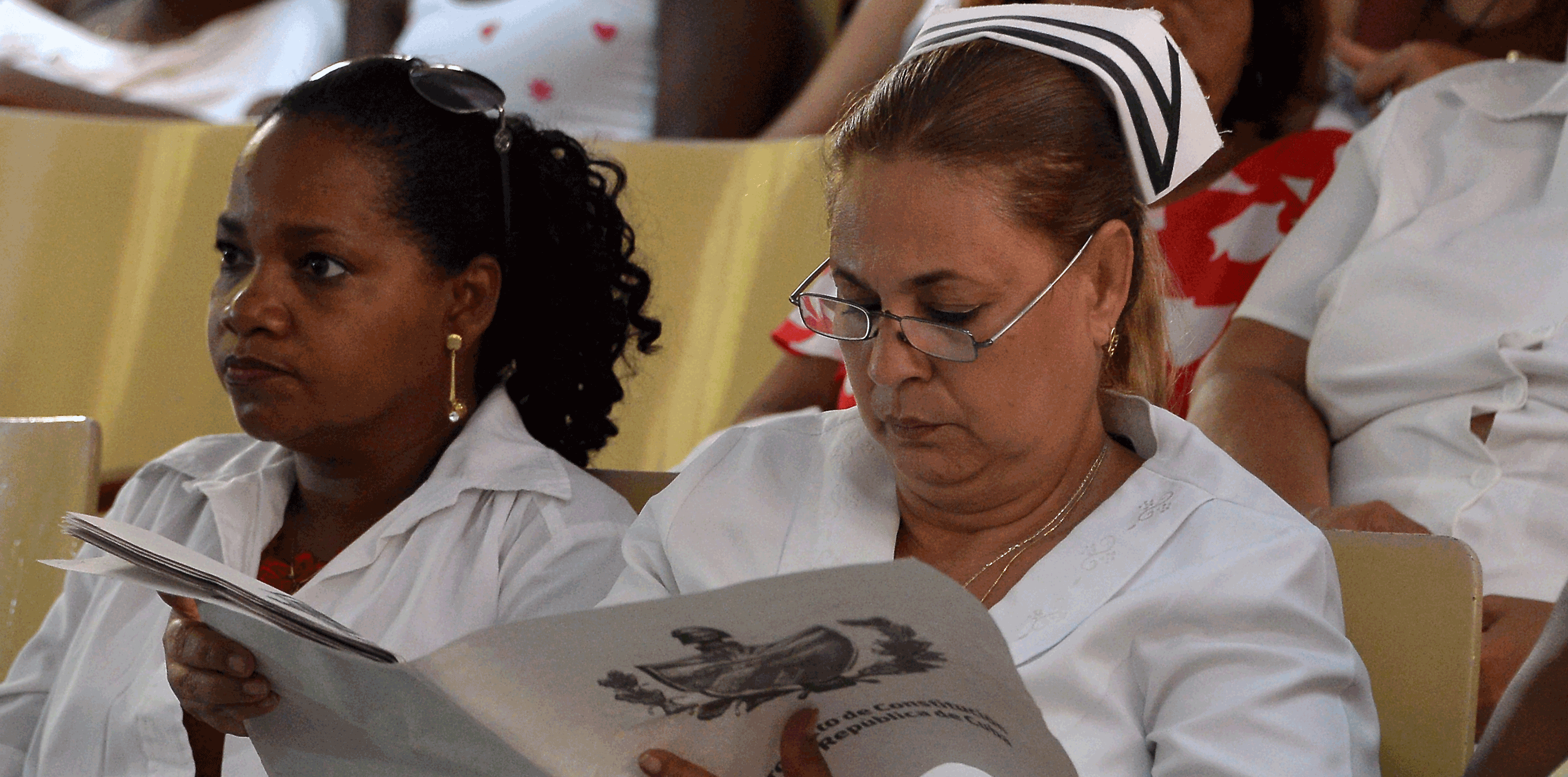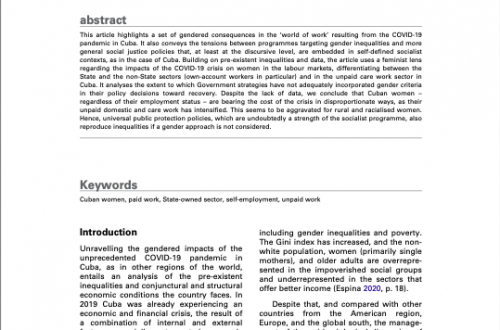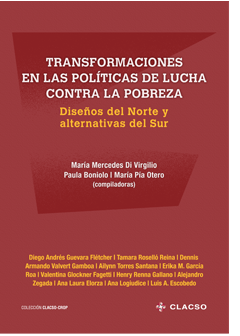Any serious analysis of the Latin-American and global lefts in the last sixty years needs to include Cuba. The Cuban Revolution has left a deep impression on the region and across the world. Cuba, it has been said, spoke for Latin America, embodied the region’s Cold War, articulated twentieth-century Latin-American anti-imperialist socialism, and changed the order of things on the island and beyond.
To appreciate the impact of the Cuban socialist experience in the thinking of the region’s left, we need a historical analysis. The influence of the Cuban Revolution was very different from the 1960s to the 1980s, in the heat of guerrilla movements and Latin-American dictatorships, than it was in the 1990s, after the collapse of the communist bloc. It was different at the beginning of the 2000s, at the onset of Latin America’s “Pink Tide,” than it is today. Neither in Cuba nor in the region as a whole can the politics and ideas of the left be treated as monoliths.
Before 1959, Cuban socialism brought together diverse participants. It is impossible to understand the triumph of the revolution without considering these varied traditions. In the first half of the twentieth century, Cuba was home to non-Marxist reformism, various forms of revolutionary socialism (anarchist, Stalinist, Trotskyist, independent Marxist, populist), as well as proponents of state socialism. Their strategies and political agendas were distinct, but they shared a determination to promote national sovereignty, develop a critique of imperial relations between the United States and Cuba, and actively defend social justice.
After 1959, this diversity was gradually but totally shut out. The domain of the left was occupied exclusively by variants of Marxism, more or less critical. By 1971, critical Marxism was largely exhausted, and pro-Soviet Marxism-Leninism under the Communist Party of Cuba was dominant. Dedication to ideological uniformity became the rule. Any independent act could be regarded as dissidence or even treason.
For at least two decades now, however, the left in Cuba has been growing more diverse, even while the bastions of official power do not necessarily offer it openings, and even though the anti-government opposition politics associated with the U.S. government has not changed. The pluralism of the leftist political field in Cuba draws its power from a different base: Cuban civil society. Projects, collectives, and organizations have sprung up around a variety of issues: environmentalism, feminism, anti-racism, animal rights, artistic freedoms, and so on. These groups have pushed forward the democratization of public space, institutional policies that expand rights, and the legal-organizational capacity of social actors. In that way, Cuban civil society is becoming more and more similar to many others around the world.
Still, Cuba’s experience of socialism has its own specific characteristics, which we must situate historically in order to properly understand their implications. The Cuban Revolution and its aftermath can help us think about the relationship between socialism and democracy—and how that relationship is reflected in Cuba’s contemporary political difficulties and the possibilities for a new left-wing politics on the island and in the larger region.
Cuban socialism has been a “socialism from above.” Its features include supremacy of central power, the priority of the “official” truth, and limited possibilities for self-organization—qualities that have varied in importance in the post-revolutionary period, but that are demonstrably connected with one another. Cubans have learned all the virtues and vices of the ironclad centrality of the state.
If we analyzed these characteristics with an exclusive emphasis on democratic procedures, we would conclude that Cuban socialism has little or nothing to teach Latin-American lefts that aspire to expand, reformulate, or complete their democracies. But democracy is not defined exclusively by political procedures. As other societies in the Americas have shown, formal political freedom permits a high degree of actual socioeconomic inequality. Liberal-democratic proceduralism does not address the despotism of the market.
A more complex analysis would allow that the Cuban Revolution successfully challenged the oligarchical structure of the preceding capitalist regime. The revolution overthrew the despotism of capitalist social relations and extended social justice. Until the 1990s, it reduced inequality to a previously unimaginable level. It established universal access to social services. It institutionalized sexual and reproductive rights for women and socialized part of the responsibility of caretaking. The Cuban Revolution recognized the need to overcome exclusions based in racism and patriarchy. Cuban socialism reduced unemployment, brought more women into the labor force, and defined a clear anti-imperialist line and politics of solidarity with the developing world. In that way, the Cuban experience of socialism demonstrated a fundamental component of democracy: freedom and equality are reciprocal. Political freedom means little without the basic material conditions of existence.
At the same time, Cuban socialism embraced the caudillista tendencies of a system centered on charismatic leadership—a phenomenon also known to other Latin-American countries of various political stripes. If capitalist countries have not ensured effective democratic procedures for popular control of the state, neither did socialist Cuba. Where capitalist societies narrow the public sphere through economic pressures, Cuba narrowed it through ideological pressures. Furthermore, the Communist Party had problems in dealing democratically with the issue of sexual diversity for more than three decades, defusing patriarchal despotism within the family and in other social spaces, and in recognizing the structural racism that occurs to this day.
Cuban socialism reminds us that democracy cannot be realized until the market’s monopoly on the regulation of social life has been broken, that social justice is primarily a political choice and not a consequence of economic development. People, not consumers, are the protagonists in politics. A redistributive state requires the refoundation of the national social compact, and a socialist project makes it possible to pose substantive questions about freedom and justice on a much more extensive scale.
But the Cuban socialist experience also serves as a reminder that the market is not the only monopoly that exists. Total central planning is a dystopia, and bureaucracy is not a synonym for the people or a path to popular control. Without room for workers to intervene in the conditions of their labor through genuinely effective forms of self-organization, and without politicizing economic and family relations, it is impossible to overcome the many forms of social and political domination.
The Cuban experience is also a warning that without autonomous social foundations, citizenship means little, and policymaking can easily be depoliticized. The liberation of women cannot be secured by a state policy of labor market integration without neutralizing patriarchal power from above and from below. Politics unfold not only in the state but in civil society; the public sphere should be a space of diversified power and not a regime to which everyone must conform. Democratic procedures are not sufficient to secure democracy, but they are necessary.
Right now, Cubans are talking about these exact problems and questions. Since August 2018, one of the most important political processes of the last few decades in Cuba has been taking place: a public debate over a proposed constitution, drawn up by a commission appointed in the previous months, and approved in the National Assembly of People’s Power. Cubans have held thousands of meetings to debate the draft law in study groups and neighborhood assemblies. The state will amend the constitution to reflect the outcomes of these debates and put the document to a popular referendum in February 2019. The new constitution will supersede the current one, adopted in 1976, and it will formalize some of the changes in Cuba’s economy and political institutions implemented since 2006. Among those changes are the transformation of the productive structure of the country, stimulating non-state sectors of the economy and foreign investment, a decrease in the redistributive work of the state, and the contraction of some social policies.
There is no doubting the importance of this constituent process, even absent an actual constituent assembly. The Latin-American left can attest to both the benefits and limits of constitutional reform. Constitutions define the framework in which the political community can maneuver and argue about policy matters. To the extent that the overarching norms of a constitution settle into the rest of the legal system, they will help shape, restrain, and secure the laws and their guarantees. Otherwise, the constitution will be a dead letter.
Popular participation in this reform process has activated recognition of the constitution as a political instrument that regulates social life, and has shown the interest of some social groups in becoming public voices with their own agendas. At the same time, government discourse since 2006 has emphasized the importance of the rule of law, although it has not always respected legal “due process” to manage economic reforms and other political processes. Nevertheless, the result of the constitutional reforms could be significant for the future of Cuba.
The proposed constitution includes for the first time the concept of a “socialist state of laws,” in which institutions would recognize the rule of the law and the supremacy of the constitution. It also recognizes the category of human rights, including rights that had never before been considered (the right to water, to a dignified shelter, to healthy food). At the same time, the draft cuts back on other rights, such as the right to education (now guaranteed only until the undergraduate level) or the right to healthcare (it now excludes dental care, previously provided). Other rights require payment; water, for example, is a right as long as due compensation is made.
However, the same document reaffirms that the Communist Party—to which less than 10 percent of the population belongs—will remain “the superior and guiding force of the State and of society.” And the contents of the constitution could be limited—not regulated or guaranteed—by existing laws, rather than the reverse. The proposed constitution is thoroughly statist: the state acts as representative, arbiter, and leader of the people always, on all matters, for all occasions.
The constituent process for the constitution took place after the exit of Raúl Castro, who had succeeded Fidel Castro as the president of Cuba in 2006. The shift in political leadership under new president Miguel Díaz-Canel, the changes in the country, and a crisis of the left across Latin America, signal new possibilities for Cuba.
In this conjuncture, Cuba should look to Latin America—to its constitutional processes, its popular social organizations, and its diverse lefts. For its part, Latin Americans of the Pink Tide, now in retreat, should look again to Cuba—not to build an altar or to find a compass, but to reconsider the shortcomings of their own lefts, and to revive vital political questions about socialism and democracy.
Ailynn Torres Santana is a researcher at the Cuban Institute for Cultural Research Juan Marinello. She studies gender and inequality and the Cuban Revolution, and the relationships between citizenship, property, and the state in Latin America.
Translated by Tim Barker.
Paper available here: https://www.dissentmagazine.org/article/socialism-from-above-assessing-the-cuban-experience



